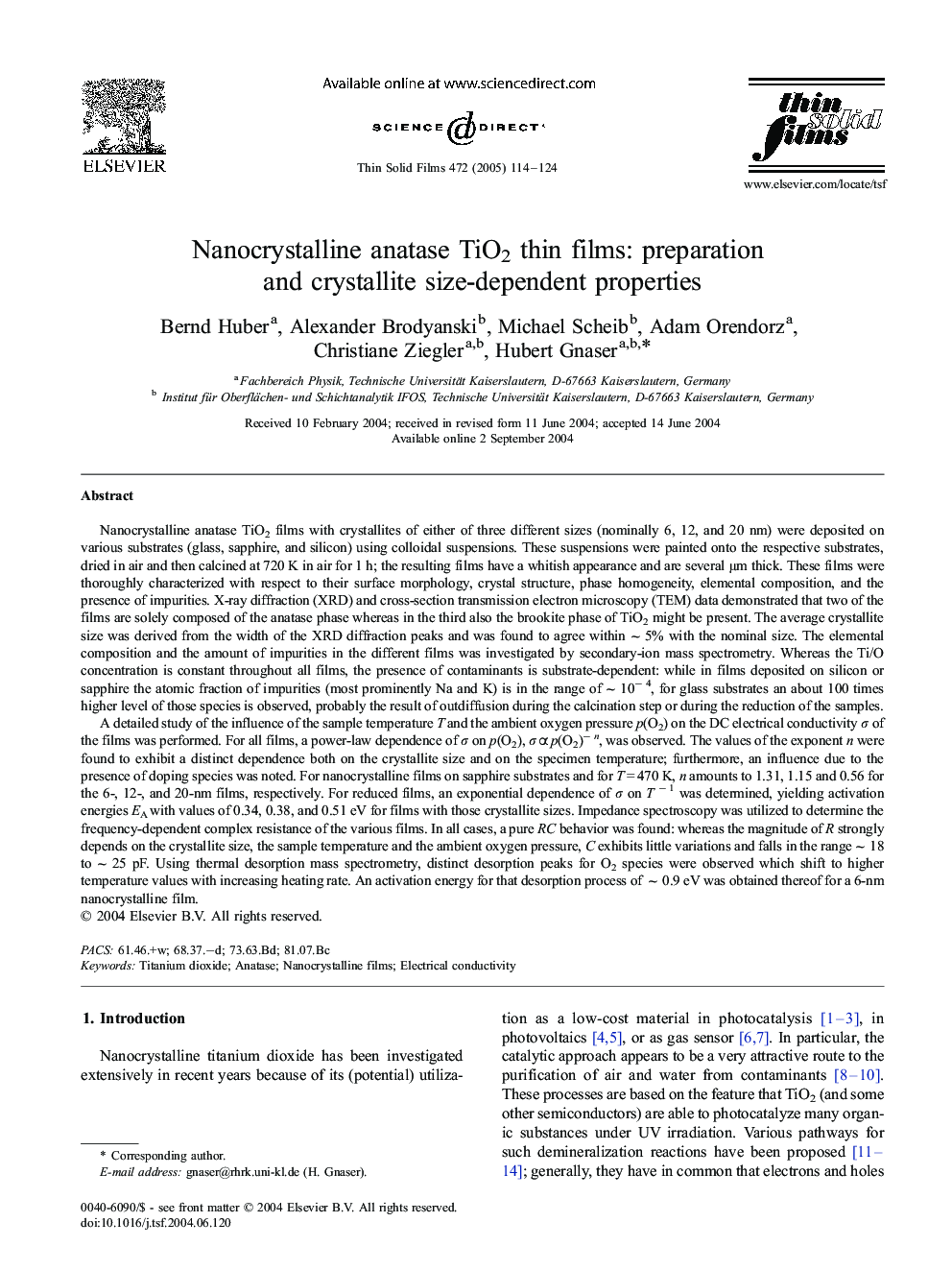| Article ID | Journal | Published Year | Pages | File Type |
|---|---|---|---|---|
| 9813023 | Thin Solid Films | 2005 | 11 Pages |
Abstract
A detailed study of the influence of the sample temperature T and the ambient oxygen pressure p(O2) on the DC electrical conductivity Ï of the films was performed. For all films, a power-law dependence of Ï on p(O2), Ïâp(O2)ân, was observed. The values of the exponent n were found to exhibit a distinct dependence both on the crystallite size and on the specimen temperature; furthermore, an influence due to the presence of doping species was noted. For nanocrystalline films on sapphire substrates and for T=470 K, n amounts to 1.31, 1.15 and 0.56 for the 6-, 12-, and 20-nm films, respectively. For reduced films, an exponential dependence of Ï on Tâ1 was determined, yielding activation energies EA with values of 0.34, 0.38, and 0.51 eV for films with those crystallite sizes. Impedance spectroscopy was utilized to determine the frequency-dependent complex resistance of the various films. In all cases, a pure RC behavior was found: whereas the magnitude of R strongly depends on the crystallite size, the sample temperature and the ambient oxygen pressure, C exhibits little variations and falls in the range â¼18 to â¼25 pF. Using thermal desorption mass spectrometry, distinct desorption peaks for O2 species were observed which shift to higher temperature values with increasing heating rate. An activation energy for that desorption process of â¼0.9 eV was obtained thereof for a 6-nm nanocrystalline film.
Keywords
Related Topics
Physical Sciences and Engineering
Materials Science
Nanotechnology
Authors
Bernd Huber, Alexander Brodyanski, Michael Scheib, Adam Orendorz, Christiane Ziegler, Hubert Gnaser,
